A small green sparkling bird that can be found in a wide variety of semi-open habitats.
The Glittering Bellied Emerald
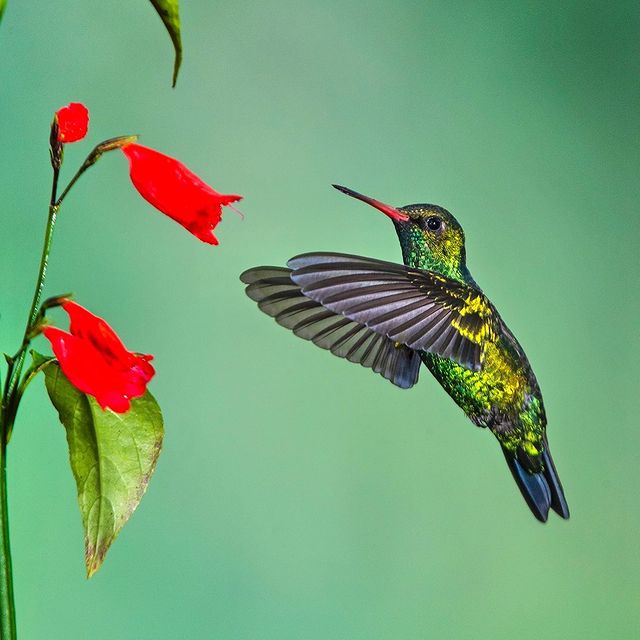
Photo Courtesy of Picuki/@sergiogregoriophoto
The glittering-bellied emerald (Chlorostilbon lucidus) has golden-green upperparts with emerald-green uppertail-coverts. As far as his underparts go, he has an iridescent bronze-green belly, with his upperbreast, throat, and chin being a shade of blue-green. The slightly forked tail is darkish blue to black. His head is more bronze to green with small white post-ocular patches. The bill is red with a black tip, the eyes are dark brown, while the legs and feet and black.
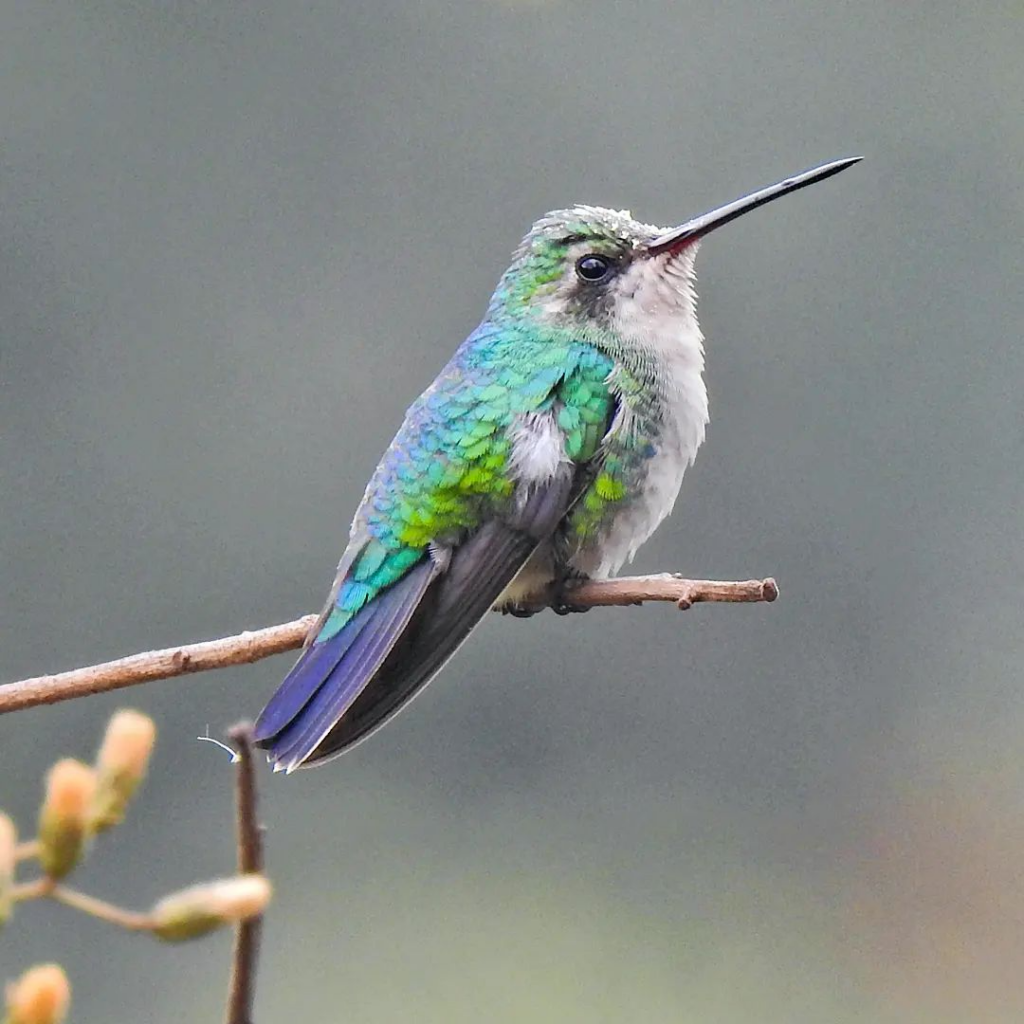
Photo Courtesy of Picuki/@jderengoski
The female has slightly golden-green upperparts, this includes her crown and forehead. Her uppertail-coverts are emerald-green, while her underparts are white, with her breast and belly being brown to grey. Her bill has a more extended black tip than in males, and she has a whitish post-ocular streak behind her eyes.
Juvenile birds resemble the female.
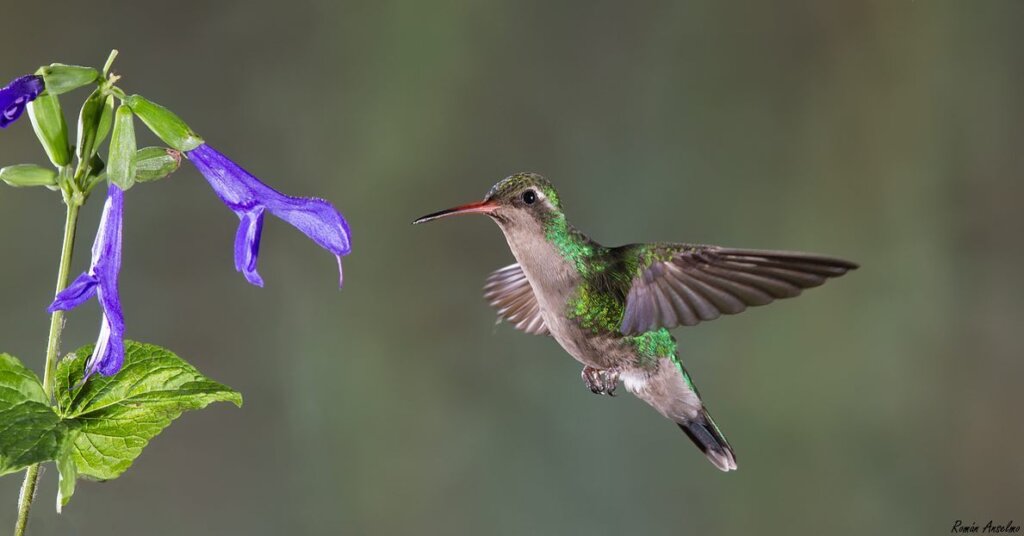
Photo Courtesy of Picuki/@roroanselmofotografia
It is found in north-eastern Argentina, eastern and central Bolivia, eastern Brazil, Paraguay, and Uruguay.
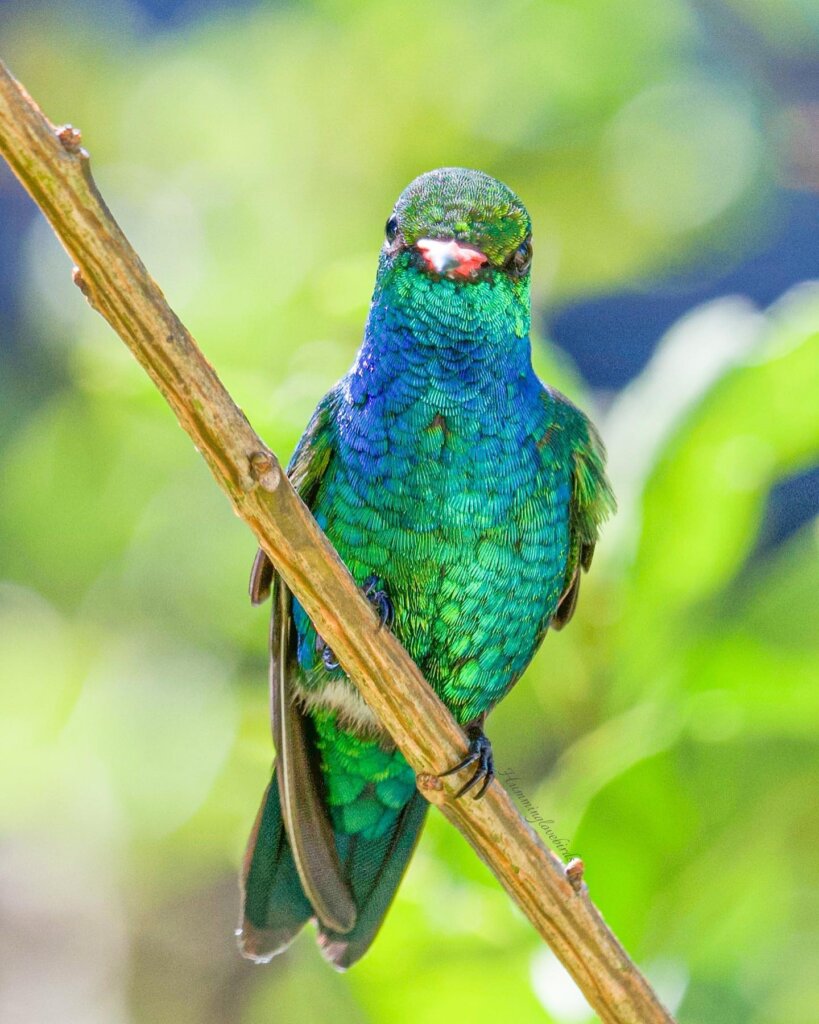
Photo Courtesy of Picuki/@humminglovebirds
The Glittering-bellied Emerald is common in a wide range of semi-arid to moderately humid scrub areas, savanna, grassland, edges of subtropical moist forests, and also urban parks and gardens.
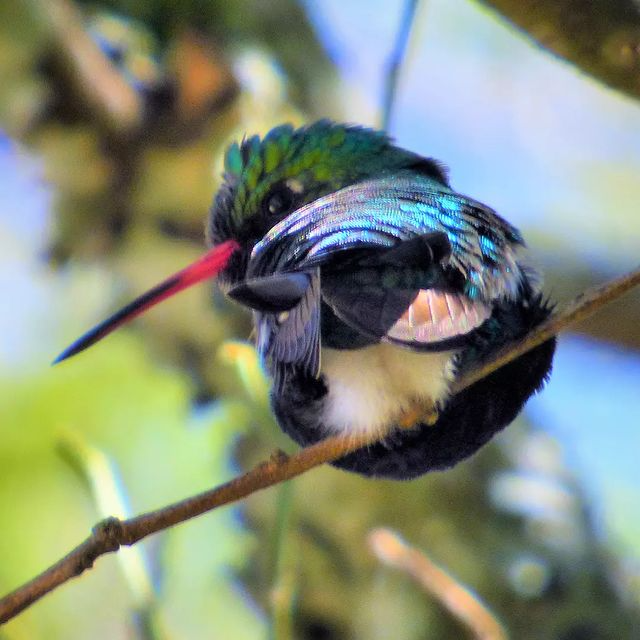
Photo Courtesy of Picuki/@hcaballero79
The Glittering-bellied Emerald Hummingbirds primarily feed on nectar taken from a variety of brightly colored, scented small flowers of trees, herbs, shrubs, and epiphytes. They favor flowers with the highest sugar content (often red-colored and tubular-shaped) and seek out, and aggressively protect, those areas containing flowers with high-energy nectar. They use their long, extendible, straw-like tongues to retrieve the nectar while hovering with their tails cocked upward as they are licking at the nectar up to 13 times per second. Sometimes they may be seen hanging on the flower while feeding.
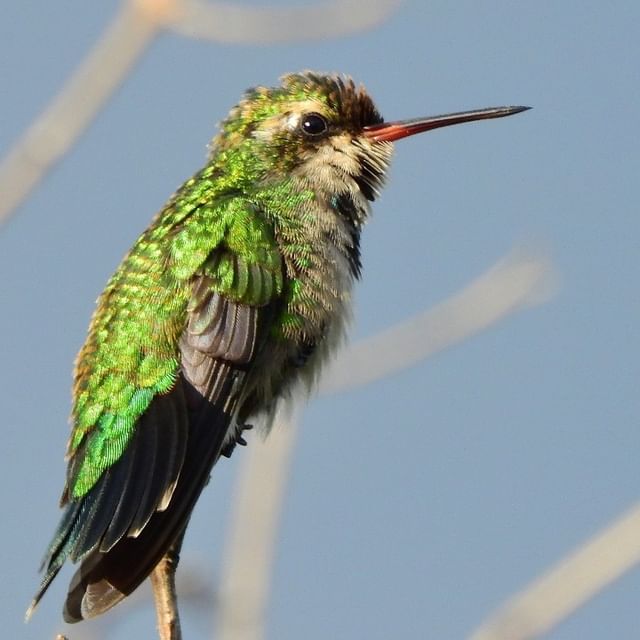
Photo Courtesy of Picuki/@pablo_demaio
During the breeding season, the male may mate with several females. In all likelihood, the female will also mate with several males. The males do not participate in choosing the nest location, building the nest, or raising the chicks. The female is responsible for building the cup-shaped nest out of plant fibers woven together and green moss on the outside for camouflage in a protected location in a shrub, bush, or tree.
She lines the nest with soft plant fibers, animal hair, and feather down, and strengthens the structure with spider webbing and other sticky material, giving it an elastic quality to allow it to stretch to double its size as the chicks grow and need more room.
The nest is typically found on a low, skinny horizontal branch. She lays an average of two white eggs, which she incubates alone, while the male defends his territory and the flowers he feeds on. The female alone protects and feeds the chicks with regurgitated food (mostly partially-digested insects since nectar is an insufficient source of protein for the growing chicks).
The female pushes the food down the chicks’ throats with her long bill directly into their stomachs. The chicks are brooded only the first week or two and left alone even on cooler nights after about 12 days. The chicks leave the nest when they are about 7 to 10 days old.
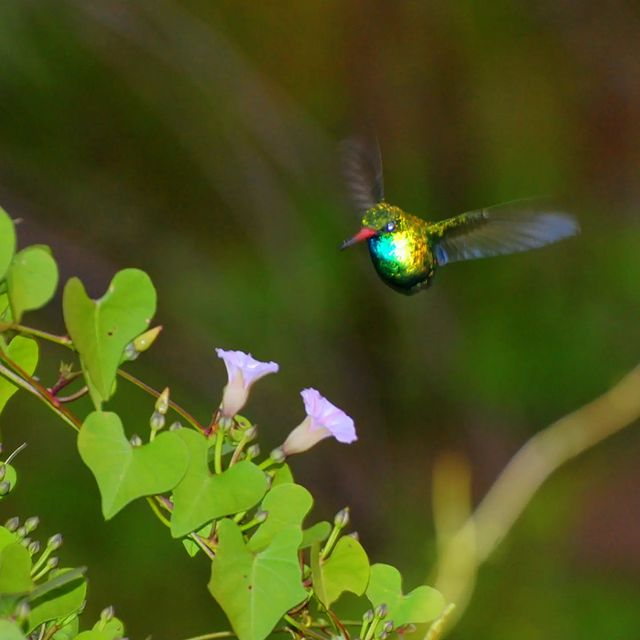
Photo Courtesy of Instagram/@barren_steppe
The Glittering-bellied Emerald is common throughout its wide range. It can be found in man-made areas such as parks, gardens, and plantations, and it occurs in several protected areas.
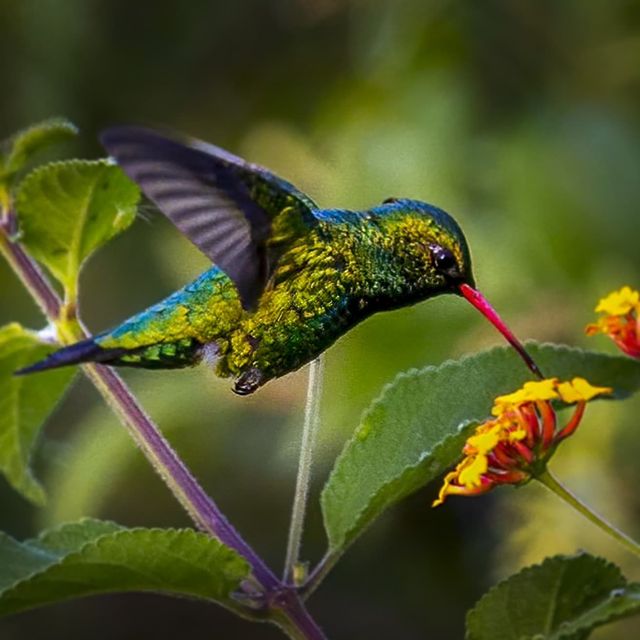
Photo Courtesy of Instagram/@abelardomendesjr
You can watch this bird right here in the video below:




